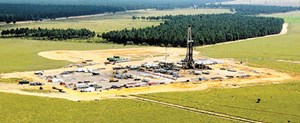Oil and gas in the capitals
WTI crude oil prices could reach U.S. $58/bbl during the second half of this year, with Brent closer to $68/bbl, said Ann-Louise Hittle, Head of Macro Oils at Wood Mackenzie. Speaking at the 2015 ARPEL Conference in Punta del Este, Uruguay, Hittle said this confirms that low oil prices will likely persist until the end of 2015. While increased consumption and refinery activity in the U.S. are encouraging an optimistic outlook, Latin America remains a center of energy investment opportunities.
Within the context of lower prices and uncertain, future exploration costs, a change in strategies in the investment portfolios of both state and private companies is required, even if it means lower profit margins. The continent has to increase production over the medium and long term, to meet a growing demand for oil and gas brought on by continuing social and industrial development.
Impact on CAPEX. However, according to a report by Fitch Ratings, despite currently available financing conditions and still-existing investor attraction to corporate bonds, it is expected that low oil prices will depress Latin American investment for the rest of 2015. For example, Pacific Rubiales has reduced its 2015 capital spending program from $3.5 billion to $1.1–1.3 billion, and Fitch believes that this estimate may go even lower, if world oil prices remain low until year-end.

In comparison, Latin America’s national oil companies (NOCs) will maintain high levels of capital spending throughout 2015, given the limited flexibility of short-term investment. Therefore, Fitch expects that total NOC investment in Latin America will remain high, although it probably will fall below initial estimates of about $90 billion for 2015, 10% lower than the $100 billion that the companies spent in 2014.
Reduction in capital spending is an option for private companies, but not so much for NOCs, such as those in Argentina, Colombia, Ecuador and Venezuela. These firms require new capital to support the oil and gas industry.
Refinancing debt. While Venezuela’s PDVSA has not yet managed to return to its production levels of 2008, the company has tried to fulfill its commitments to bondholders, by selling assets and by searching for additional investment from Asia to consolidate its oil industry. The appointment of a new president at
Colombia’s Ecopetrol aims to exchange the company’s energy policy for a more dynamic one with regard to new investment, in order to strengthen exploration and maintain current oil production, while increasing gas reserves, which have stalled.
PDVSA’s main objective, after the fall of worldwide oil prices, is to refinance its debt to capitalize the company and be able to continue with joint projects. This will allow it to meet its goals and expand output. In mid-April, PDVSA paid the interest due its bondholders for 2017, 2027 and 2037. PDVSA also received a heavy infusion of capital from China, totaling about $5 billion. Since 2008, the Asian giant has invested more than $50 billion in PDVSA through two funds and direct loans to Venezuela, which the country repays with exports of 500,000 bpd of crude oil and derivatives.
New PDVSA President Eulogio del Pino said at the end of April that Venezuela is exporting 2.4 MMbopd to 2.5 MMbopd out of total production of 2.85 MMbopd. He also confirmed a 4.4% drop in total income during 2014 versus the previous year, as a consequence of the fall in crude prices.
The PDVSA financial report confirms that its revenue from the sale of oil and derivatives, as well as interest income, fell to $128.439 billion in 2014 from $134.326 billion the previous year. Its revenues were impacted by a 7.6% decrease in the sale of crude oil and products, which totaled $105.271 billion last year, down from $113.979 million in 2013. Thus, PDVSA earned a net profit of $9.074 billion in 2014, down from $15.835 billion recorded the previous year. In May, the company paid interest, for the six months ending May 2015, to all holders of bonds issued and placed by the state, maturing in 2021, 2024 and 2035.
Russian partnership. Venezuela reached an agreement with Russian oil giant Rosneft to invest $14 billion in oil and gas projects during the coming years. This venture will make Rosneft one of PDVSA’s main partners in the Orinoco Oil Belt. During the month of July, PDVSA commissioned the Rafael Urdaneta project in the Gulf of Venezuela, specifically the Cardon IV Block, with a 9.5-Tcf gas reservoir. This will meet demand from the domestic market. During this year, gas production will reach 450 MMcfd. In mid-June, Venezuela also received a second credit installment of $10 billion from Chinacon, to finance various projects in the Orinoco Oil Belt.
Improved cash flow also led to an agreement to sell PDVSA’s refinery in Chalmette, La., to PBF Energy Company Inc., which allows PDVSA to receive significant revenue. Agreements concerning debt were reached with other South American countries, as well: Panama is reviewing a proposal for Venezuela to repay debt, owed to exporters in the Colon Free Trade Zone, plus Copa Airlines and the pharmaceutical industry, with oil and gas exports. In mid-July, the president of the Venezuelan-Panamanian Chamber of Integration, Francisco De Sola Lander, placed the amount at issue at around $800 million. ![]()


